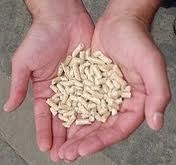
Features
Energy
Procurement
Municipal waste pellets and natural gas heat Southshore Greenhouses
November 23, 2012 By Brandi Cowen
 A multiple feedstock biomass burner supplies approximately 60 per cent of Southshore Greenhouses daily needs.
A multiple feedstock biomass burner supplies approximately 60 per cent of Southshore Greenhouses daily needs. Bert Mucci, owner of Southshore Greenhouses Inc., monitors energy markets so closely that some days he says he feels more like an energy producer than a fruit and vegetable grower.
When natural gas prices spiked in the late 1990s, Mucci installed a multiple feedstock biomass burner at his greenhouse operation in Kingsville, Ont. Today, Mucci pays less than half of 1990s prices for natural gas to fuel roughly 40 per cent of Southshore’s daily needs. The rest is fuelled mainly by municipal waste pellets purchased from Remasco (Renewable Energy Management and Services Company). Burning waste has decreased Southshore’s environmental footprint.
“Ours is the only biomass burner around that’s regulated by the Ministry of the Environment. Emissions from Remasco’s waste pellets are lower than natural gas, coal or oil.”
Mucci also burns waste in another greenhouse operation. Recently, his wood biomass supplier lowered its prices by almost half, facing tight competition from lower natural gas prices. “Canada’s greenhouse industry, overall, is facing the same pressures that we are to stay competitive. Biomass suppliers are under the gun to reduce prices to even stay afloat.”
Mucci is prepared with a long-term strategy.
“We plan to keep using a biomass and natural gas energy mix and to continue monitoring natural gas markets to ensure that we remain competitive with local greenhouses and, more importantly, with imported greenhouse produce. Natural gas prices have been volatile for a long time and we don’t want to get caught if they spike again.”
Mucci’s capital and infrastructure investment was made for the long term.
“We’re in business for the future and want to maintain good relations with biomass suppliers to make sure this feedstock is available today and tomorrow.”
This article originally appeared in Farm Credit Canada’s Knowledge Insider: Energy (vol. 1, issue 2). It is published here with permission.
Print this page